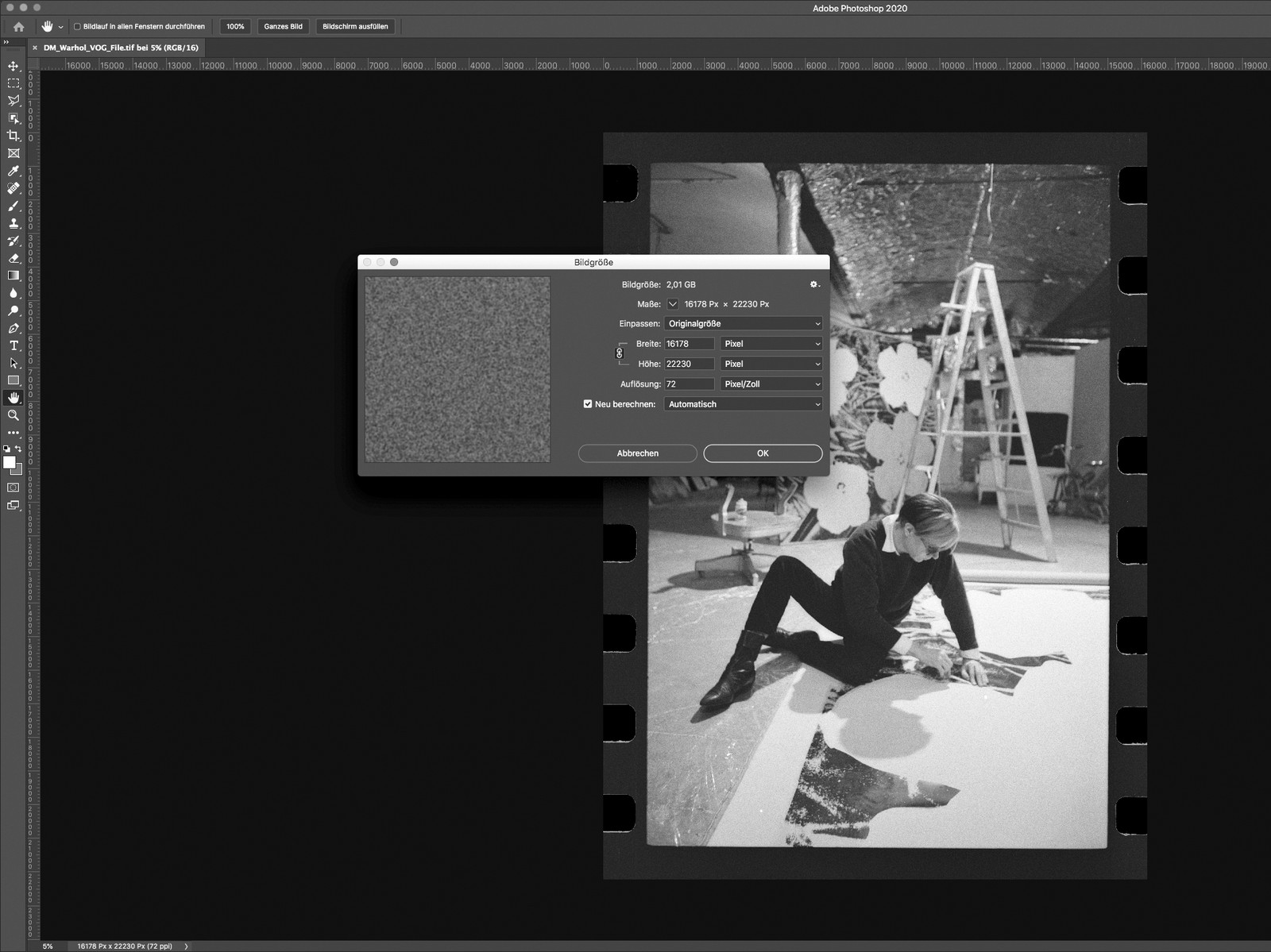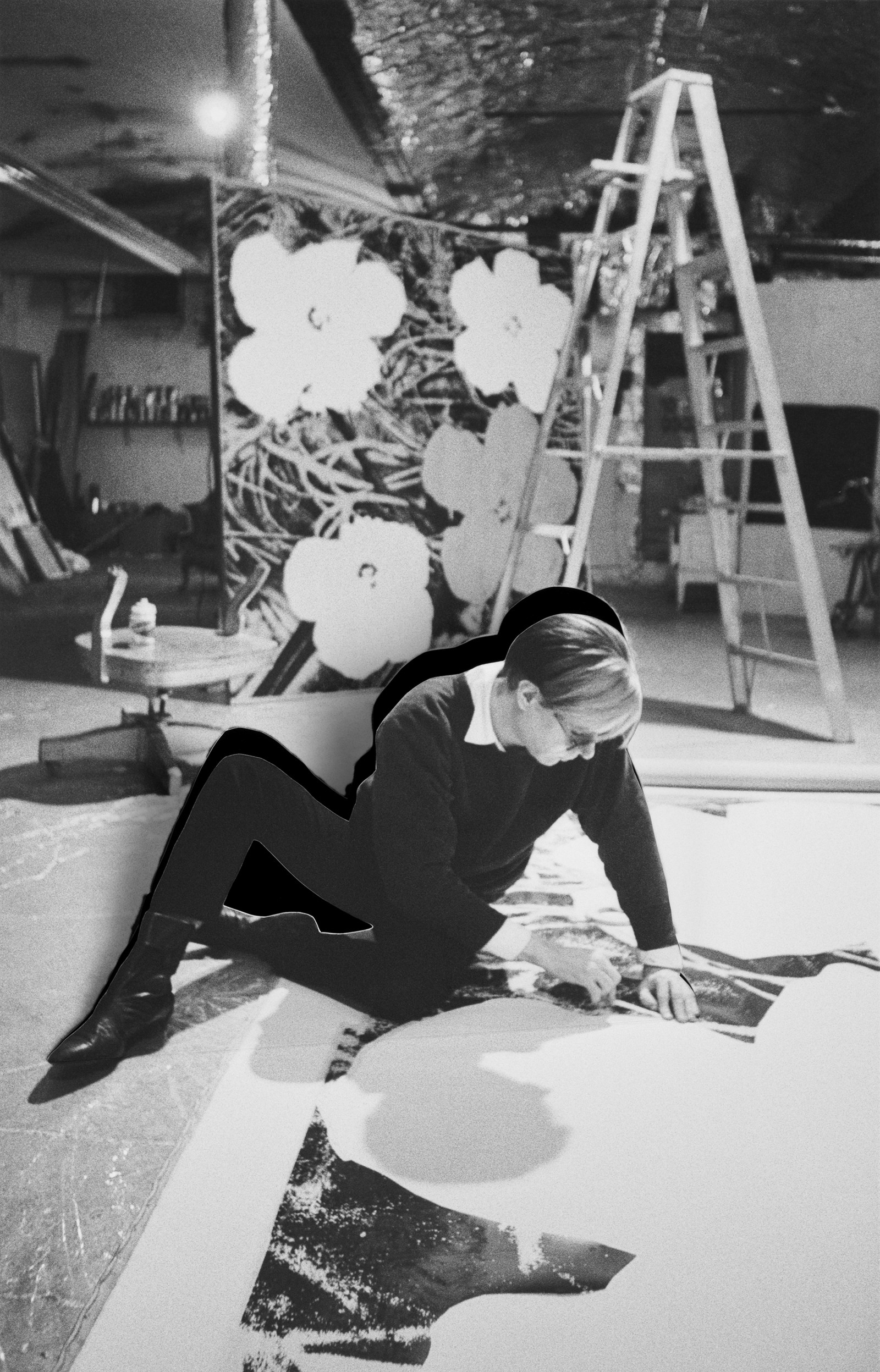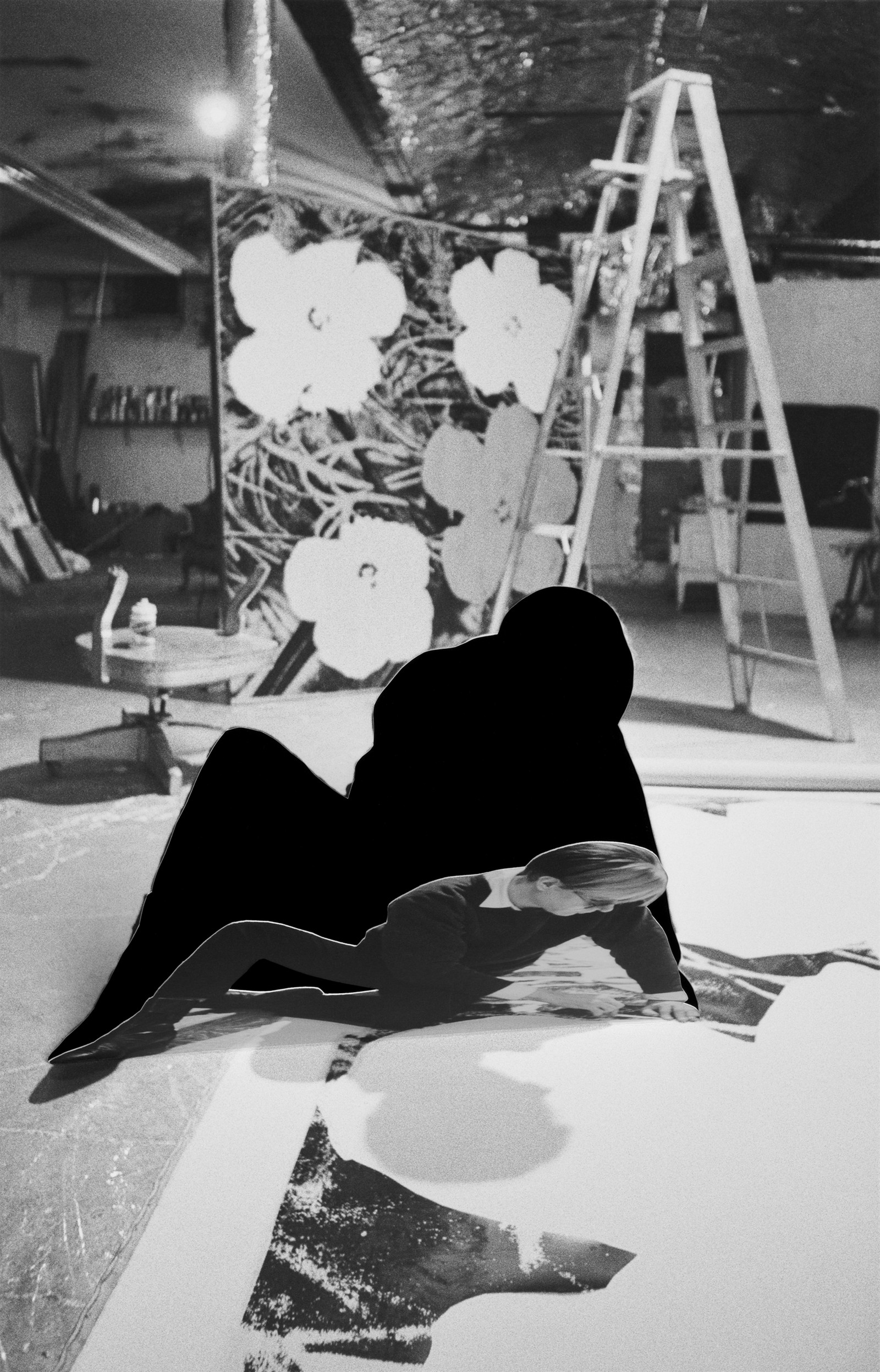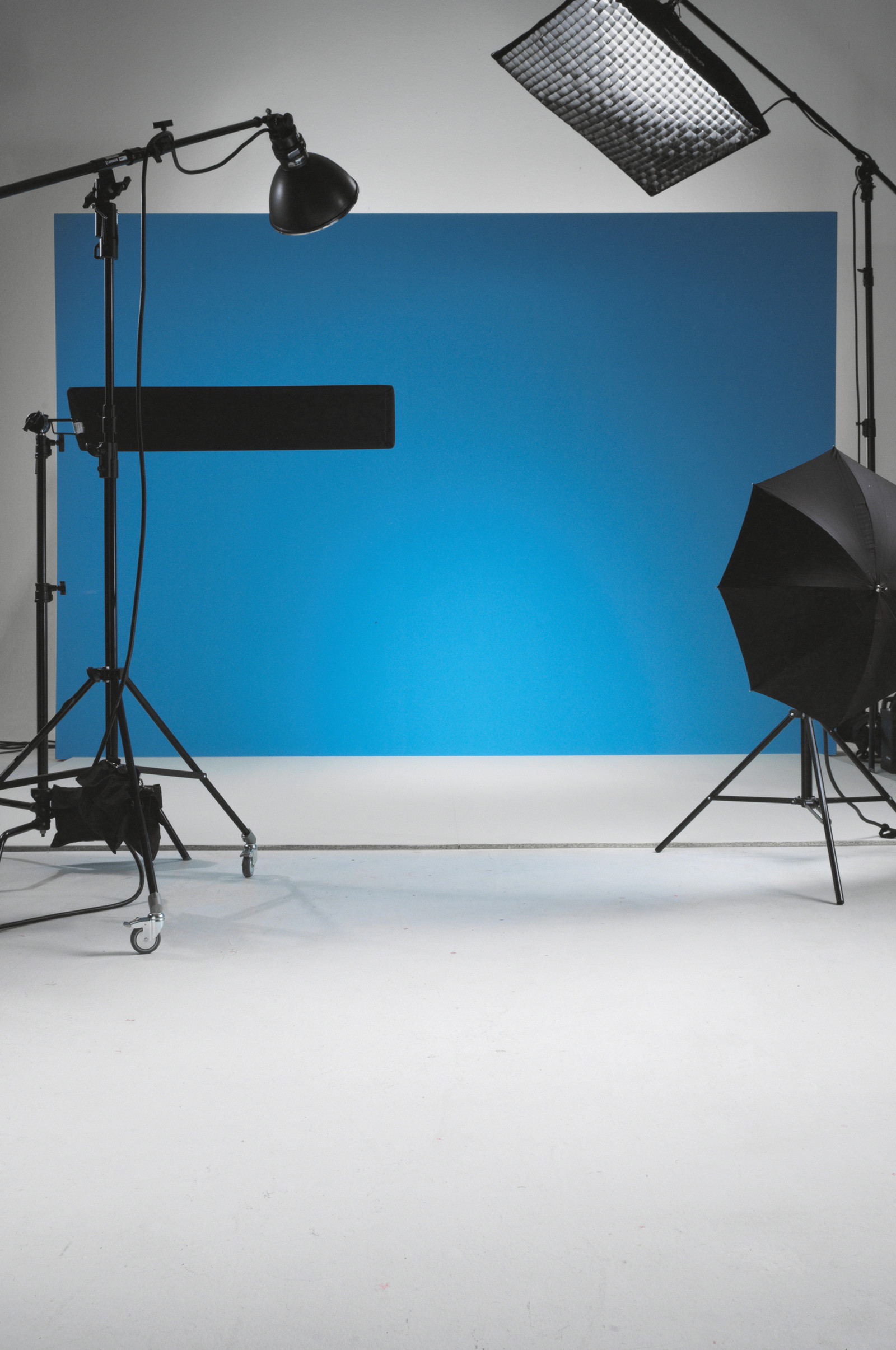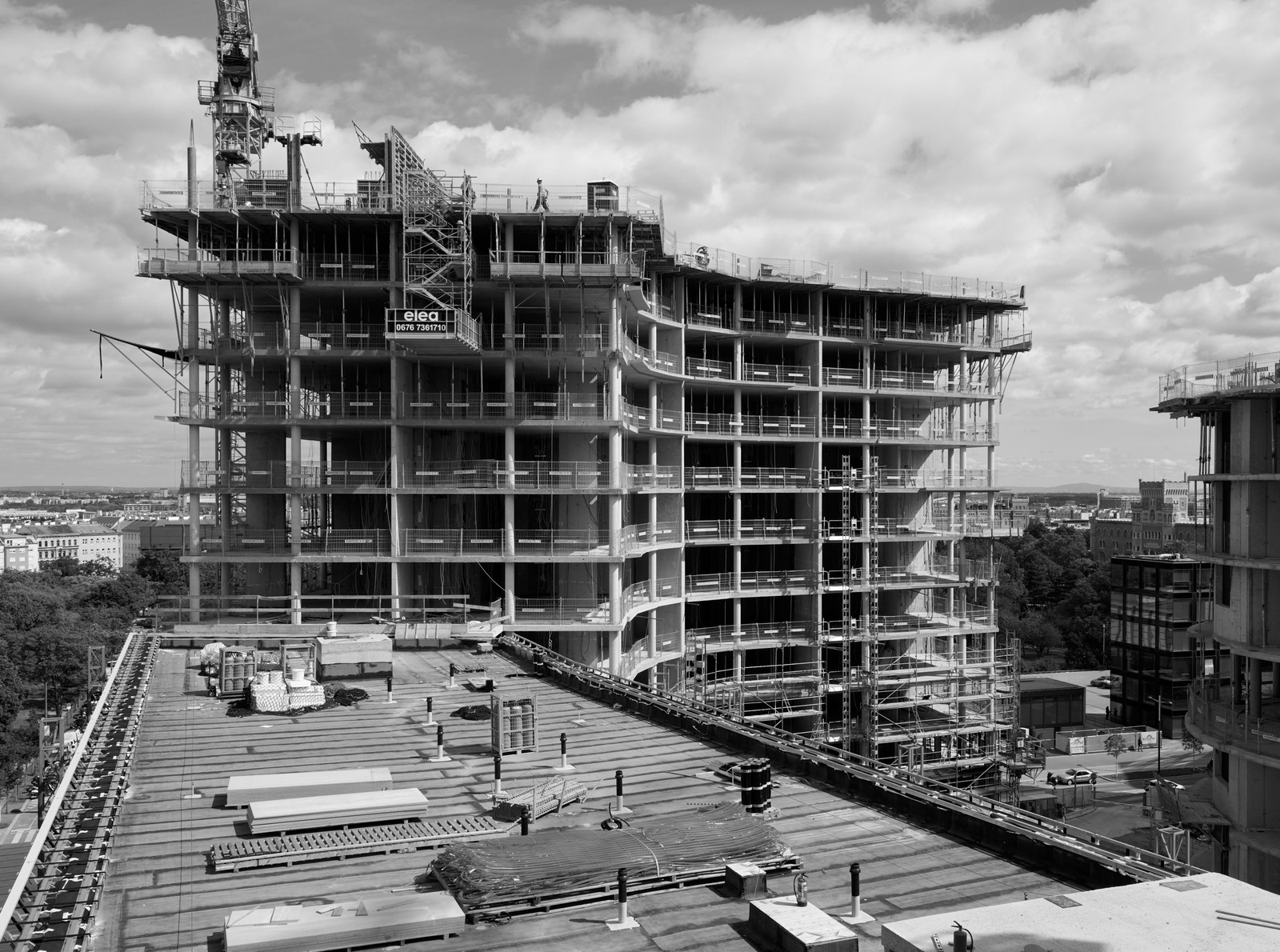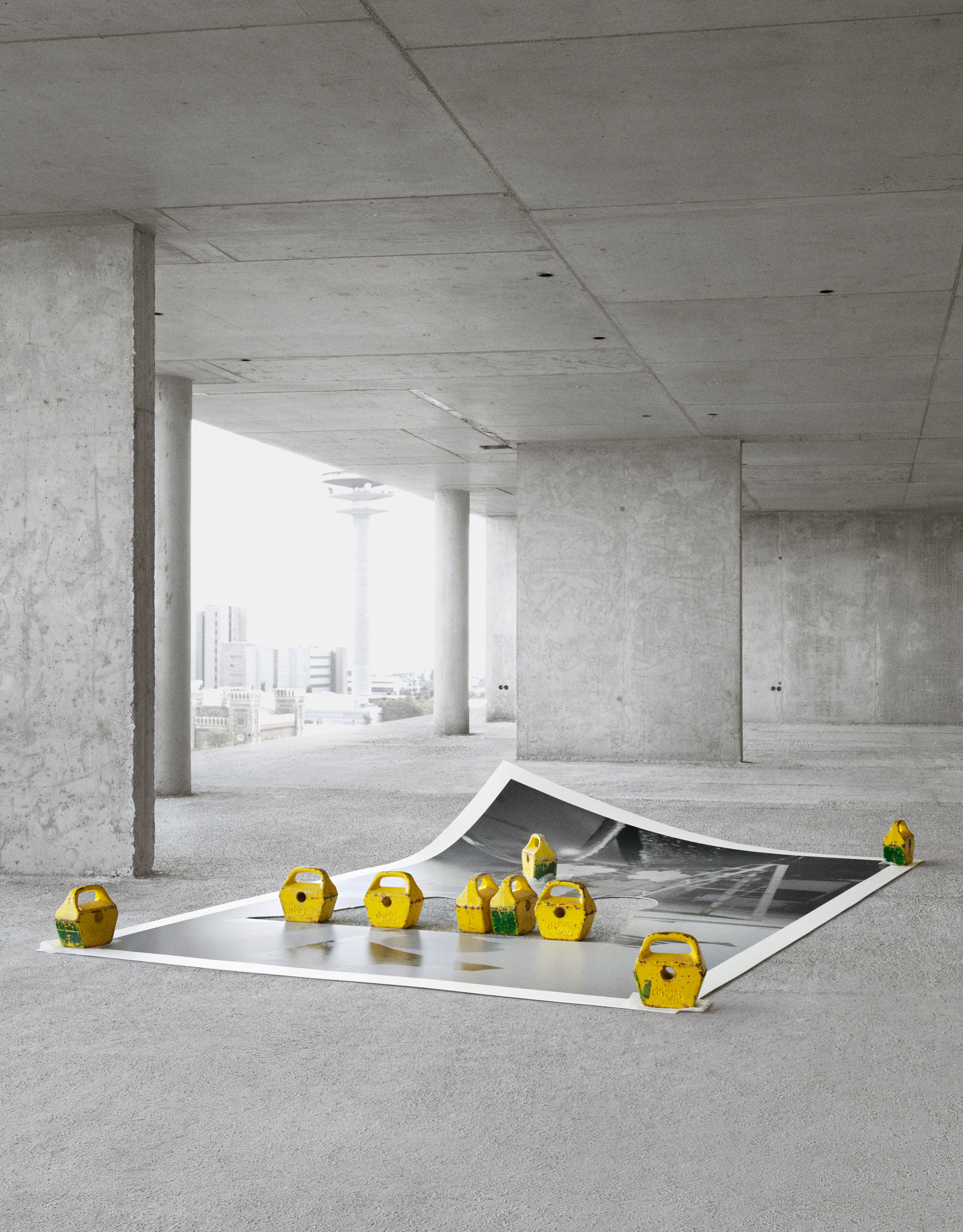2
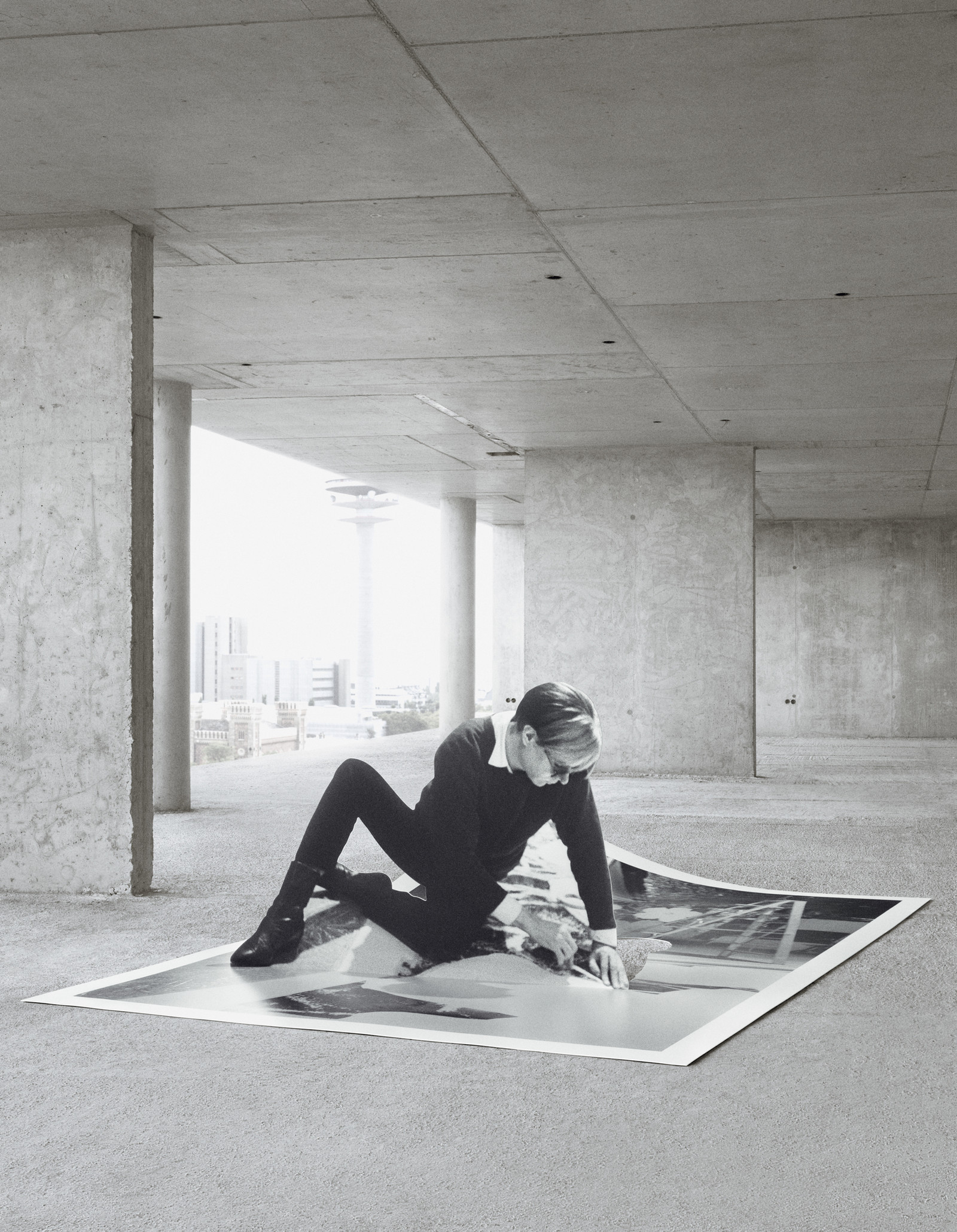
Archivaufnahme © David McCabe
(Andy at work on a large flower painting, the Factory, NYC, spring 1965)
Andy Warhol © The Andy Warhol Foundation for the Visual Arts, Inc.
Licensed by Bildrecht, Wien 2019
Gregor Eggenberger, Set (Up), 2019
Archivaufnahme © David McCabe
(Andy at work on a large flower painting, the Factory, NYC, spring 1965)
Andy Warhol © The Andy Warhol Foundation for the Visual Arts, Inc.
Licensed by Bildrecht, Wien 2019
1
Set (Up)
1
Set (Up)
2

Archivaufnahme © David McCabe
(Andy at work on a large flower painting, the Factory, NYC, spring 1965)
Andy Warhol © The Andy Warhol Foundation for the Visual Arts, Inc.
Licensed by Bildrecht, Wien 2019
Gregor Eggenberger, Set (Up), 2019
Archivaufnahme © David McCabe
(Andy at work on a large flower painting, the Factory, NYC, spring 1965)
Andy Warhol © The Andy Warhol Foundation for the Visual Arts, Inc.
Licensed by Bildrecht, Wien 2019
3
“In 1964, Andy Warhol commissioned the 24 year old photographer David McCabe to document his life and work for one year.”
(Matthew Placek, A Walking History with David McCabe, 2019)
5
25. Februar, 2019 | 12:08
Request: Andy (Warhol) at work on a large flower painting, the factory, NYC, spring 1965
“Dear David, looking for a photograph of an artist at work whose silhouette could ‘escape from’ the two-dimensionality of the photograph, I came across your Andy (Warhol) at work on a large flower painting. The intension is to produce a large-scale reproduction of this picture, cut out Andy, lift him up and integrate his erected figure into an urban setting.”
6
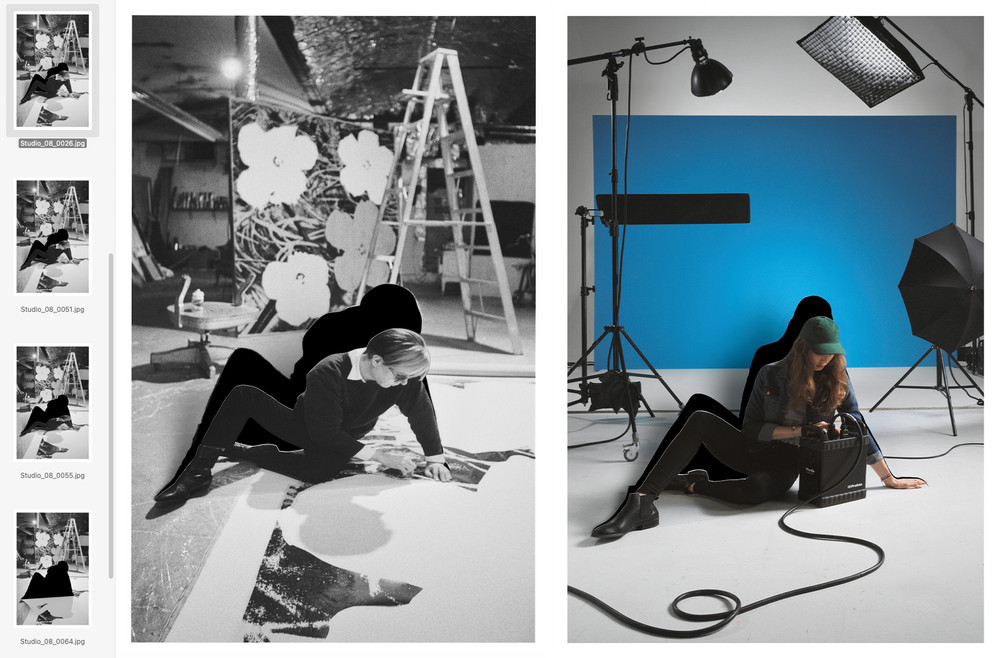
Gregor Eggenberger, Studien zu Set (Up): Andy, Jana (cut-outs)
Archivaufnahme © David McCabe
(Andy at work on a large flower painting, the Factory, NYC, spring 1965)
Andy Warhol © The Andy Warhol Foundation for the Visual Arts, Inc. / Licensed by Bildrecht, Wien 2019
4
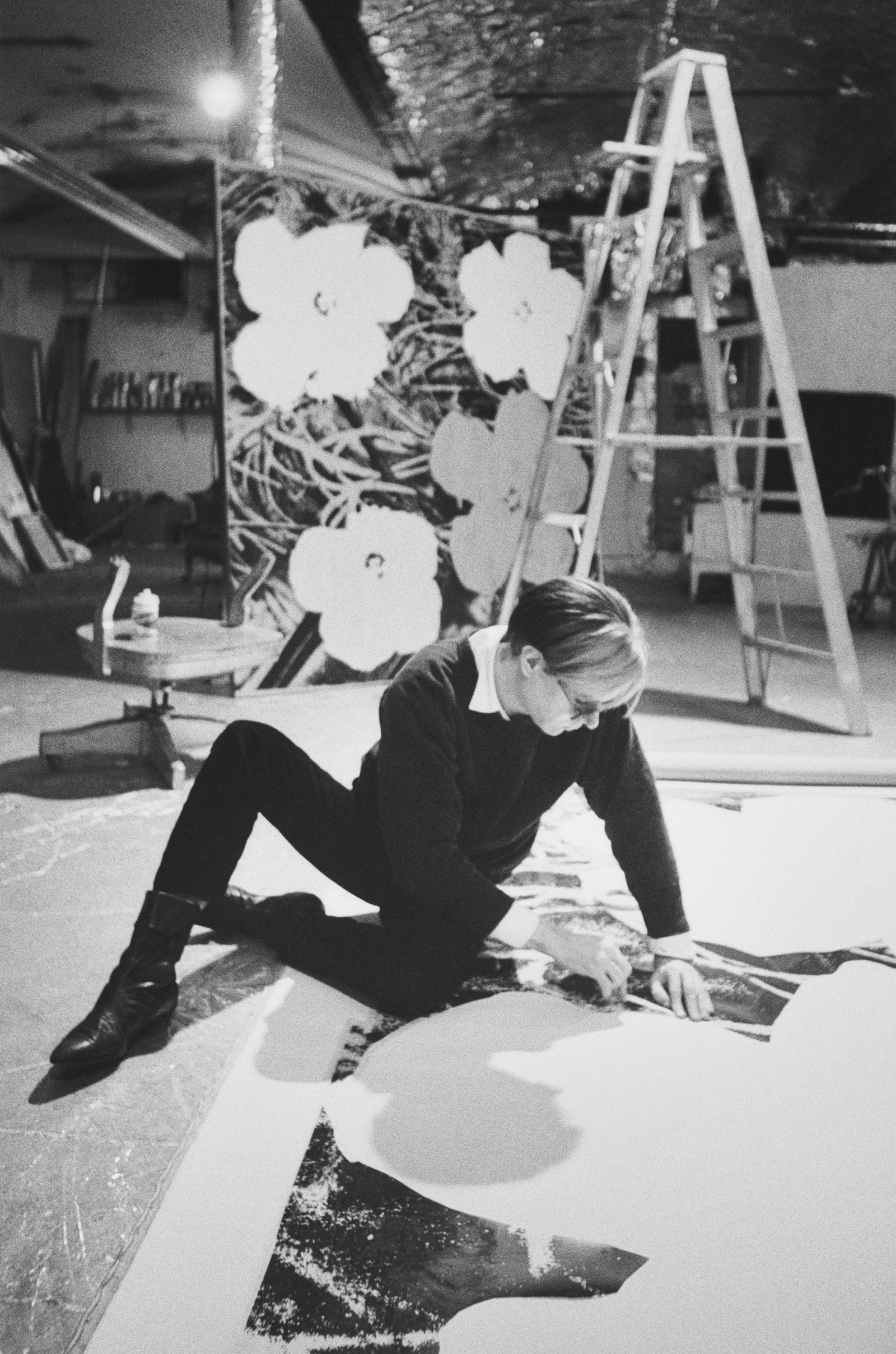
Andy Warhol © The Andy Warhol Foundation for the Visual Arts, Inc. / Licensed by Bildrecht, Wien 2019
Archivaufnahme © David McCabe (Andy at work on a large flower painting, the Factory, NYC, spring 1965)
Andy Warhol © The Andy Warhol Foundation for the Visual Arts, Inc. / Licensed by Bildrecht, Wien 2019
3
“In 1964, Andy Warhol commissioned the 24 year old photographer David McCabe to document his life and work for one year.”
(Matthew Placek, A Walking History with David McCabe, 2019)
4

Andy Warhol © The Andy Warhol Foundation for the Visual Arts, Inc. / Licensed by Bildrecht, Wien 2019
Archivaufnahme © David McCabe (Andy at work on a large flower painting, the Factory, NYC, spring 1965)
Andy Warhol © The Andy Warhol Foundation for the Visual Arts, Inc. / Licensed by Bildrecht, Wien 2019
5
25. Februar, 2019 | 12:08
Request: Andy (Warhol) at work on a large flower painting, the factory, NYC, spring 1965
“Dear David, looking for a photograph of an artist at work whose silhouette could ‘escape from’ the two-dimensionality of the photograph, I came across your Andy (Warhol) at work on a large flower painting. The intension is to produce a large-scale reproduction of this picture, cut out Andy, lift him up and integrate his erected figure into an urban setting.”
6

Gregor Eggenberger, Studien zu Set (Up): Andy, Jana (cut-outs)
Archivaufnahme © David McCabe
(Andy at work on a large flower painting, the Factory, NYC, spring 1965)
Andy Warhol © The Andy Warhol Foundation for the Visual Arts, Inc. / Licensed by Bildrecht, Wien 2019
20. August, 2019 | 16:23
Request: high res scan David McCabe negative requirements
“Dear Junko,
We need a high-res scan of the original negative with the following specs:
- highest resolution possible by your scanner
(no upscaling in Photoshop)
- raw scan: no image editing applied, no retouching
- no USM / scan without sharpening
- 16 bit tiff file
We’ll reproduce this image approx. 200 x 300 cm
(approx. 79 x 118 inch).”
16
18

Archivaufnahme © David McCabe
(Andy at work on a large flower painting, the Factory, NYC, spring 1965)
Andy Warhol © The Andy Warhol Foundation for the Visual Arts, Inc.
Licensed by Bildrecht, Wien 2019
Gregor Eggenberger, Set (Up), 2019
Archivaufnahme © David McCabe
(Andy at work on a large flower painting, the Factory, NYC, spring 1965)
Andy Warhol © The Andy Warhol Foundation for the Visual Arts, Inc.
Licensed by Bildrecht, Wien 2019
13
“In 1964 the photographer David McCabe was given the assignment of a lifetime when Andy Warhol hired him to follow him around New York and chronicle his exploits for a year, thereby participating in the manufacturing of Warhol’s public image and the enduring myth of downtown New York. […] McCabe shot thousands of black-and-white images that captured Warhol’s self-designed mythology in the making.” (Alex Vadukul, New York Times, 23. März, 2021)
NY Times
15
17
19
Gregor Eggenberger
Set (Up), 2019
Unter Realität verstehen wir vor allem Dinge, die im dreidimensionalen Raum existieren. Die Fotografie hingegen ist nur ein Abbild, ein Ausschnitt von etwas, das sich zu einem bestimmten Zeitpunkt tatsächlich vor der Kamera befunden hat. Lassen sich diese beiden Parameter, also das Zwei- und Dreidimensionale, jedoch auch miteinander verschränken, gibt es mithin eine Form des Dazwischen? Oder lässt sich der Prozess der Bildwerdung vielleicht sogar wieder umkehren? Mit Set (Up) wird jedenfalls der Versuch unternommen, den Dargestellten in einer Art Vexierbild von der schwarzweißen Archivaufnahme zurück in die heutige Wirklichkeit zu transferieren, um ihm und seinen Ideen damit (wieder) Raum zu geben.
13
“In 1964 the photographer David McCabe was given the assignment of a lifetime when Andy Warhol hired him to follow him around New York and chronicle his exploits for a year, thereby participating in the manufacturing of Warhol’s public image and the enduring myth of downtown New York. […] McCabe shot thousands of black-and-white images that captured Warhol’s self-designed mythology in the making.” (Alex Vadukul, New York Times, 23. März, 2021)
NY Times
15
16
17
18

Archivaufnahme © David McCabe
(Andy at work on a large flower painting, the Factory, NYC, spring 1965)
Andy Warhol © The Andy Warhol Foundation for the Visual Arts, Inc.
Licensed by Bildrecht, Wien 2019
Gregor Eggenberger, Set (Up), 2019
Archivaufnahme © David McCabe
(Andy at work on a large flower painting, the Factory, NYC, spring 1965)
Andy Warhol © The Andy Warhol Foundation for the Visual Arts, Inc.
Licensed by Bildrecht, Wien 2019
19
Gregor Eggenberger
Set (Up), 2019
Unter Realität verstehen wir vor allem Dinge, die im dreidimensionalen Raum existieren. Die Fotografie hingegen ist nur ein Abbild, ein Ausschnitt von etwas, das sich zu einem bestimmten Zeitpunkt tatsächlich vor der Kamera befunden hat. Lassen sich diese beiden Parameter, also das Zwei- und Dreidimensionale, jedoch auch miteinander verschränken, gibt es mithin eine Form des Dazwischen? Oder lässt sich der Prozess der Bildwerdung vielleicht sogar wieder umkehren? Mit Set (Up) wird jedenfalls der Versuch unternommen, den Dargestellten in einer Art Vexierbild von der schwarzweißen Archivaufnahme zurück in die heutige Wirklichkeit zu transferieren, um ihm und seinen Ideen damit (wieder) Raum zu geben.
BAI und Kunst – Ideen brauchen Raum
Veröffentlicht in verschiedenen Magazinen und Tageszeitungen und als Insert (Die Zeit, Der Standard, Die Presse, Falter, Spike Art Magazine u.a.), sowie als 24-Bogen-Plakate in Wien.
